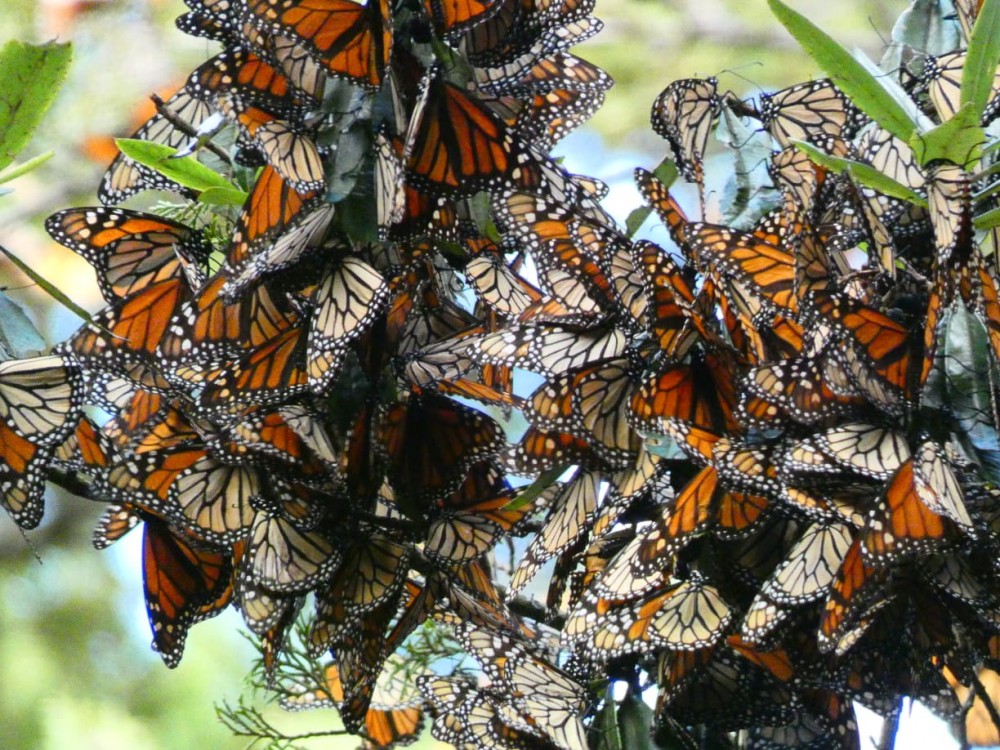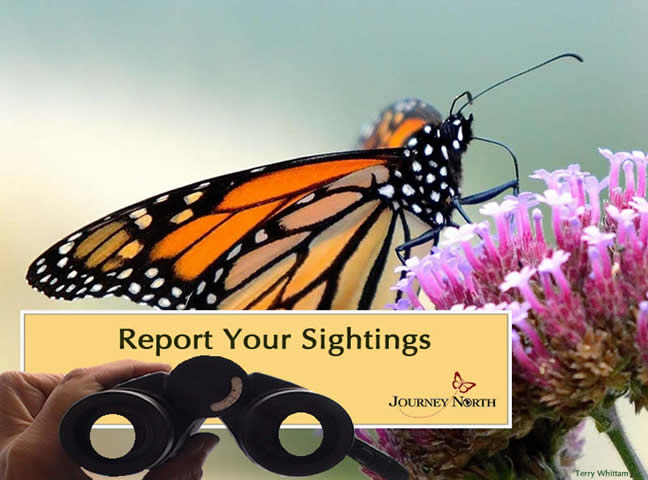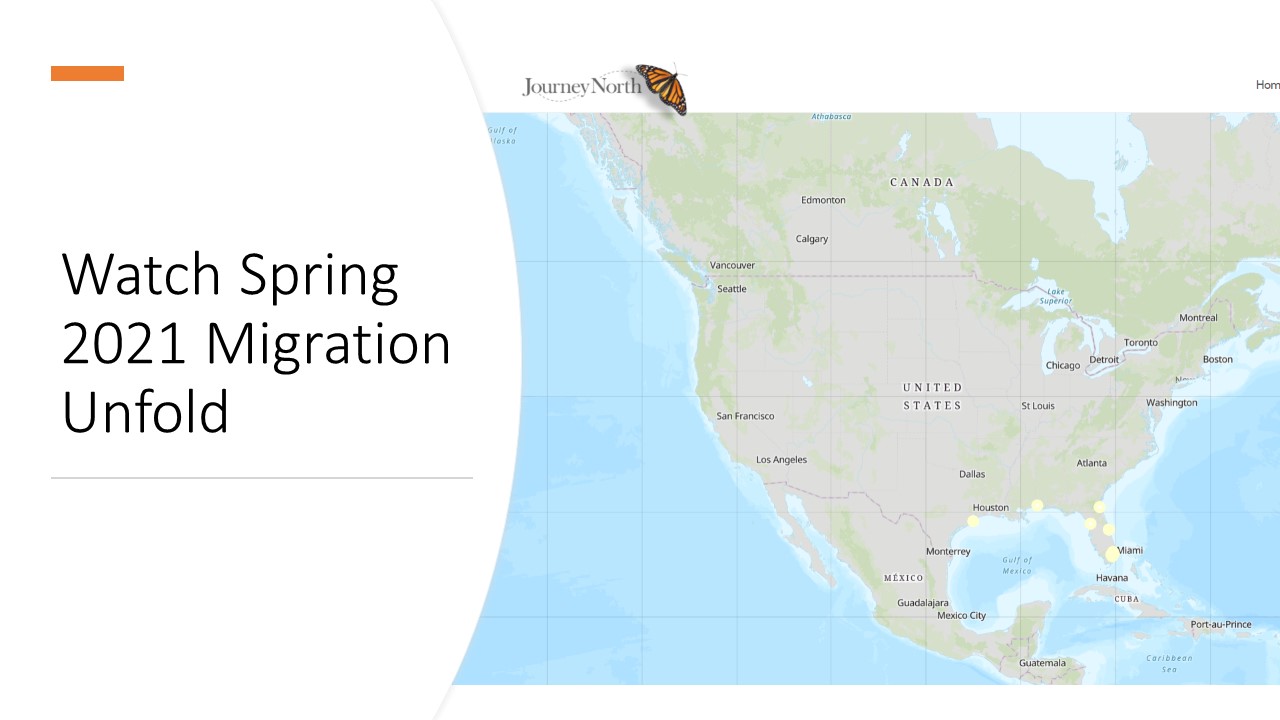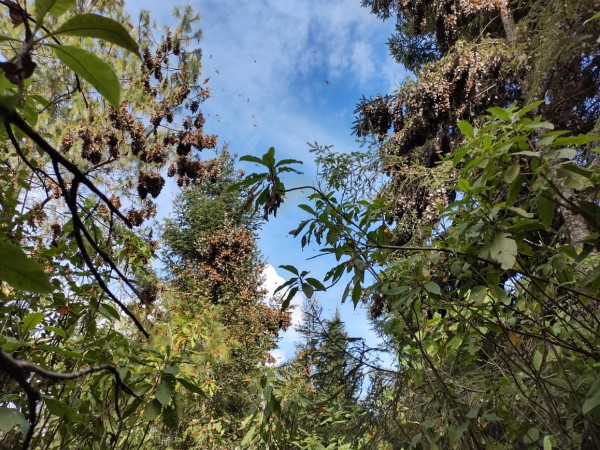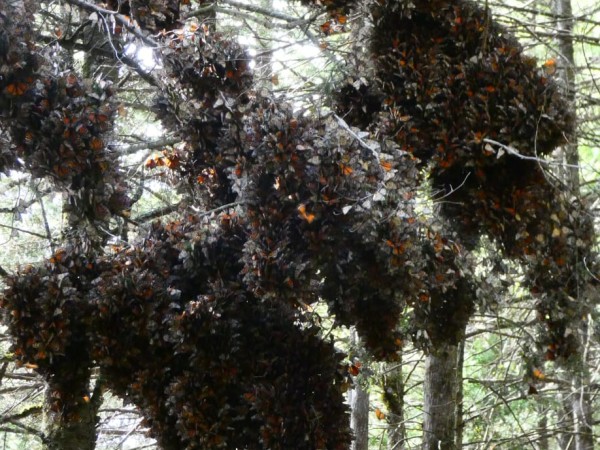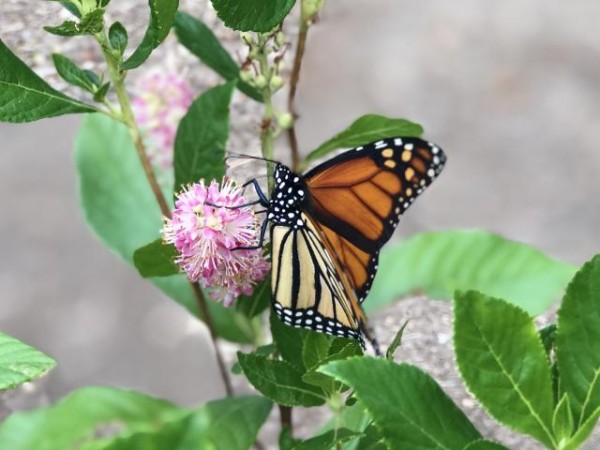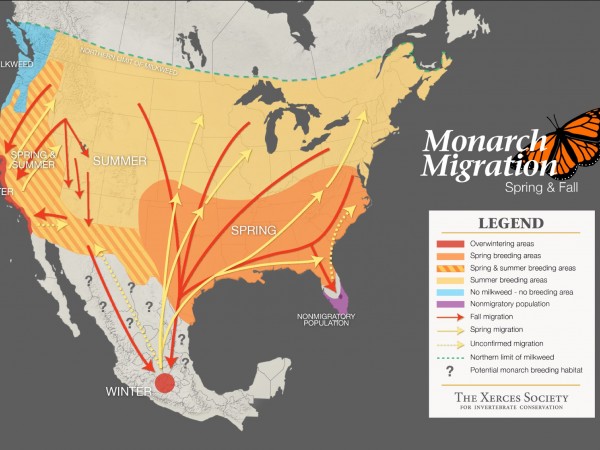Overwintering Monarchs
Letter From Ellen Sharp: Challenges and Changes
At Cerro Pelon Sanctuary, Ellen Sharp highlights some exciting media coverage, details changes in butterfly behavior this season, and work yet to be done. She writes, "There are two things I wanted to share with you this week. The first item: Cerro Pelon Monarch Butterfly Sanctuary was featured in the latest issue of National Geographic. The last time Cerro Pelon appeared in these pages was 44 years ago, when this magazine published the cover story 'DISCOVERED: The Monarch’s Mexican Haven.' No specific locations were mentioned in that piece: its author was concerned about the impact of uncontrolled tourism on the butterflies."
Read more of Ellen Sharp's Sixth Letter From Cerro Pelon Monarch Sanctuary: Challenges and Changes
Estela Romero's School Visits
For the rest of December and January, Ms. Romero will describe her school visits in her weekly blog posts delivering Symbolic Ambassador Butterflies (as part of the Symbolic Migration Project) and other environmental educational programming. Beginning in February, Ms. Romero will return to report on monarch happenings in the Sierra Chincua and El Rosario Sanctuaries until the monarchs take flight for points north.
Monitor Overwintering Monarchs
If you live in the Gulf states of Texas, Louisiana, Mississippi, Alabama, and Florida as well as Georgia, South Carolina and North Carolina, Journey North has a special invitation for you. Not all monarchs migrate to Mexico. Some breed throughout the winter in the southern U.S., and scattered reports show that other monarchs might overwinter here in the US in a non-reproductive state. Researchers and others studying monarchs seek your help to understand this phenomenon.
1. Report -- Monarch Adult Sighted
- What? Number of adult monarchs observed during one, 15-minute time period.
- When ? From December 2020 to March 2021.
- How often? Once a week from same location if monarchs are present.
- Photos? Yes, upload one photograph for each report submitted. Photos are extremely helpful in verifying your monarch sightings.
- Comments? Yes, if possible, provide answers to these questions:
- Were monarchs flying
- Nectaring? From what flowers?
- Basking/resting in the sun? On what bush or tree?
2. Report -- Monarch Egg
- What? Monarch eggs observed from one location. You do not need to count eggs. Presence of eggs will tell us if breeding is occurring.
- When? From December 2020 to March 2021.
- How often? Once a week from same location if eggs are present.
- Photos? Yes, upload one photograph for each report submitted.
- Comments? Yes, what species of milkweed did you observe the monarch egg?
3. Report -- Monarch Larva
- What? Monarch larvae observed from one location. You do not need to count larvae. Presence alone will tell us if breeding is occurring.
- When? From December 2020 to March 2021.
- How often? Once a week from same location if larva are present.
- Photos? Yes, upload one photograph for each report submitted.
- Comments? Yes, what species of milkweed did you observe the monarch larva?
Monarchs and the Endangered Species Act
In a special article, Dr. Karen Oberhauser, director of the UW–Madison Arboretum, shares her thoughts on the recent decision by the U.S. Fish & Wildlife Service that listing the monarch butterfly on the Endangered Species Act (ESA) is warranted but precluded.
Read Dr. Karen Oberhauser's special article: Monarchs and the Endangered Species Act

